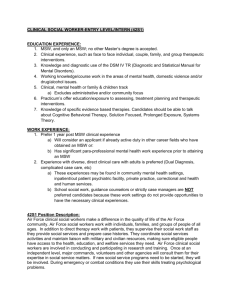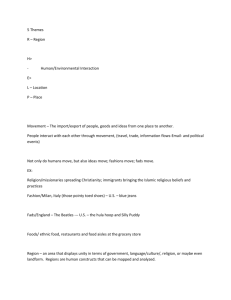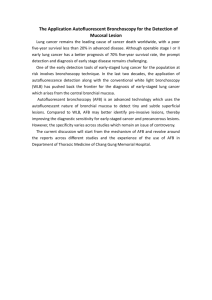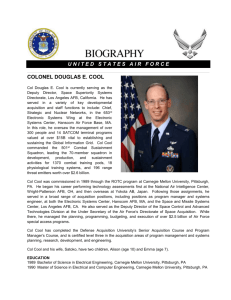Wet Lab for AFB Smear Microscopy
advertisement
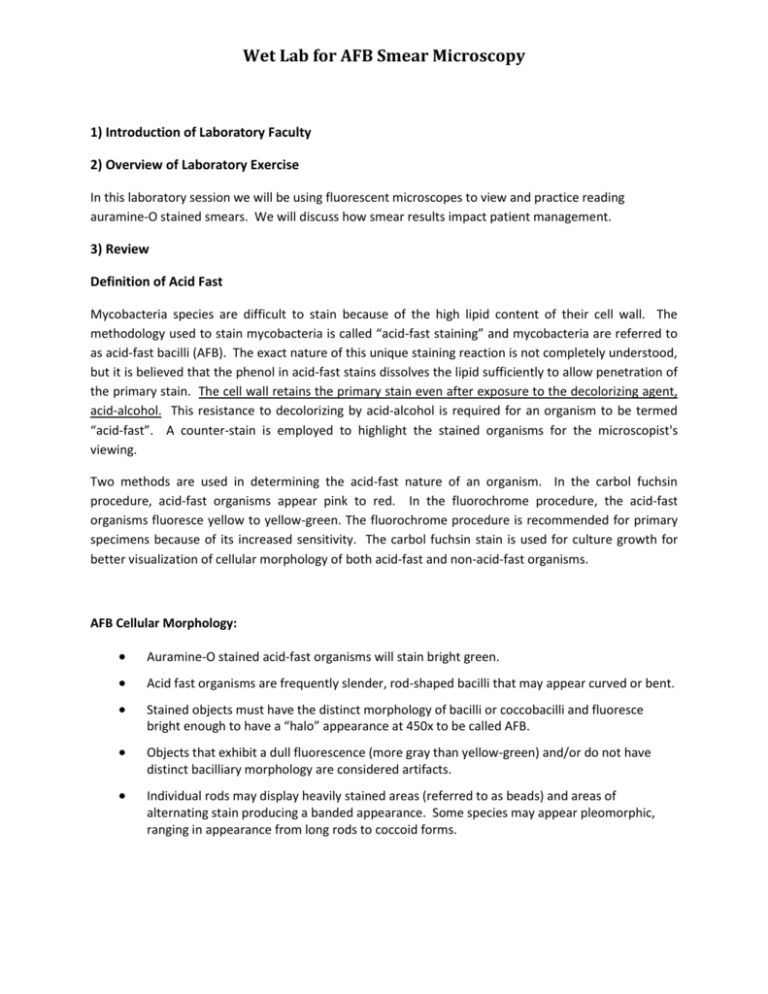
Wet Lab for AFB Smear Microscopy 1) Introduction of Laboratory Faculty 2) Overview of Laboratory Exercise In this laboratory session we will be using fluorescent microscopes to view and practice reading auramine-O stained smears. We will discuss how smear results impact patient management. 3) Review Definition of Acid Fast Mycobacteria species are difficult to stain because of the high lipid content of their cell wall. The methodology used to stain mycobacteria is called “acid-fast staining” and mycobacteria are referred to as acid-fast bacilli (AFB). The exact nature of this unique staining reaction is not completely understood, but it is believed that the phenol in acid-fast stains dissolves the lipid sufficiently to allow penetration of the primary stain. The cell wall retains the primary stain even after exposure to the decolorizing agent, acid-alcohol. This resistance to decolorizing by acid-alcohol is required for an organism to be termed “acid-fast”. A counter-stain is employed to highlight the stained organisms for the microscopist's viewing. Two methods are used in determining the acid-fast nature of an organism. In the carbol fuchsin procedure, acid-fast organisms appear pink to red. In the fluorochrome procedure, the acid-fast organisms fluoresce yellow to yellow-green. The fluorochrome procedure is recommended for primary specimens because of its increased sensitivity. The carbol fuchsin stain is used for culture growth for better visualization of cellular morphology of both acid-fast and non-acid-fast organisms. AFB Cellular Morphology: Auramine-O stained acid-fast organisms will stain bright green. Acid fast organisms are frequently slender, rod-shaped bacilli that may appear curved or bent. Stained objects must have the distinct morphology of bacilli or coccobacilli and fluoresce bright enough to have a “halo” appearance at 450x to be called AFB. Objects that exhibit a dull fluorescence (more gray than yellow-green) and/or do not have distinct bacilliary morphology are considered artifacts. Individual rods may display heavily stained areas (referred to as beads) and areas of alternating stain producing a banded appearance. Some species may appear pleomorphic, ranging in appearance from long rods to coccoid forms. Wet Lab for AFB Smear Microscopy Method of examination of fluorochrome (Auramine-O) stained primary specimen smears: Scan Control Slide: o Negative control should not contain AFB o Positive control should contain AFB with appropriate staining and morphology Screen fluorochrome-stained slides at 250x magnification. Systematically examine the stained specimen on the slide (at 250x this equals ≈30 fields). The morphology of fluorescing objects should be confirmed at a magnification of 450x or greater to avoid a false positive report due to fluorescing debris/artifacts. If AFB are seen, enumerate and record the number seen. Report out to physician based on scale. Scoring CDC AFB Smear Fluorescent Microscopy Scoring System AFB Counts per 250x AFB Counts per 450x Reporting 0 AFB seen on smear 0 AFB seen on smear No AFB Seen 1 – 2 AFB in 30 fields 1 – 2 AFB in 70 fields (ex. 2 AFB [Actual]) 1 - 9 AFB in 10 fields 2 - 18 AFB in 50 fields 1+ 1 - 9 AFB in each field 4 - 36 AFB in 10 fields 2+ 10 - 90 AFB in each field 4 - 36 AFB in each field 3+ >90 AFB in each field >36 AFB in each field 4+ Your Scale (Optional) Actual AFB Count Request Repeat Specimen 4) Power Point Presentation showing examples of AFB smears 5) Specifics of Exercise Participants will check the control slide and then read and score the 6 Auramine-O stained slides (plus bonus slides) using the CDC scoring system. Wet Lab for AFB Smear Microscopy 6) Brief microscope training Results Case Studies Did most participants overscore or underscore smears? Staining issues that you’ve experienced in your lab? Lots of artifacts? Reasons for false-positive and false-negative smears Reasons for False-Positive Smears Cross contamination Use of poor quality slides Contaminated reagents Contaminated tap water rinse Artifacts (food particles, precipitated stain) Technical errors Reasons for False-Negative Smears Microscope problems Insufficient centrifugation Incorrect slide warmer temperature Inadequate staining Technical errors Incomplete slide reading Smears too thin Smears too thick (washed off slide) Score the 6 slides provided plus bonus slides as time allows. Slide No. CONTROL 1 2 3 4 5 6 Notes: Smear Score Notes Acceptable? Y N
